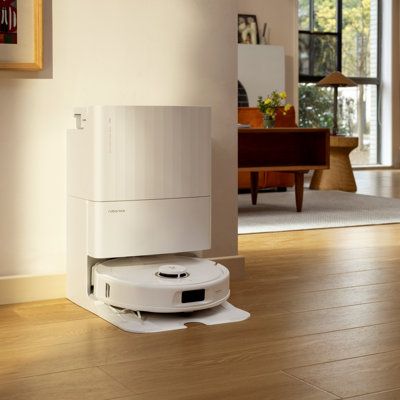Retirement planning is different for everyone. But, there is one common denominator: Planning your retirement should feel like planning for an incredible weekend … only the “weekend” lasts for the rest of your life, and the planning starts years in advance. Like now. Like yesterday.
If you’re fresh in your 20s or 30s, thinking about retirement four decades from now is probably the last thing on your mind. But, when planning for retirement, the truth is that the earlier you start saving and investing, the better off you’ll be, thanks to the power of compound interest. So, if you put saving for retirement in front of mind and are already setting money aside for retirement, you’re well on your way to financial freedom.
Remember the last time you were at work has one of those, “Wouldn’t it be nice to fly to Bali today?” moments. That 30-second daydream — that’s your retirement dream. Now you can make it a goal and plan for it. How?
In the next six steps, we’re going to demystify saving for retirement.
1. Know how much you need for retirement.
Not sure how much you’ll need? There are services like Ellevest, a digital investment platform for women, that can make a free retirement plan for you. They’ll recommend a goal number for retirement, down to the dollar. The will also calculate your pre-retirement salary (that’s what they project you’ll earn in the year before you retire based on your salary curve), which is based on your gender and education level. They then target getting you to 90%, of that pre-retirement taxes, after taxes and retirement savings.
Beyond that, they give you a personal monthly investing goal based on what you’ve told them about yourself and how much you’ve saved so far in your existing retirement accounts.
They estimate you’ll spend less than you do before you retire (think: no commuting costs, or expensive work clothes), but not too much less (after all, many of you tell us you plan on traveling like crazy when you retire). While some others forecast this at a lower percentage of your salary, in this case, in our opinion, more is better.
2. Save like it’s your job.
How much should you save? Well, it depends on when you start. The bottom line here is always the earlier you start, the less dough you need to sock away. That’s because of compounding, which Einstein is said to have called “the most powerful force in the universe.” Your money starts working for you right away, and even small amounts can grow to large amounts over a long investing horizon.
For example, if a 22-year-old woman with a college education earns $50,000 a year and starts investing 12% of her salary in a low-cost, diversified portfolio with a 0.50% fee, she will retire at 65 comfortably (at 90% of her pre-retirement salary). But get this — if she puts it off until she’s 30, she’ll need to save 16% — even though she’s earned a few promotions and is making more. And if she waits until 35, it’s 19% of her annual salary.
Not to mention, in your thirties there are competing priorities. For example, purchases such as a home or expenses for kids occur more often here than in your twenties.
If you’re not currently saving, going from 0% to 10% or 15% might sound daunting. Kind of like going from couch potato to yoga expert. It’s OK to start off slowly. Take a close look at your budget and see how much you can afford to comfortably save now. Then increase that number a little bit at a time.
The good news here is that if you’re ready to start saving today, you can open a retirement account with Ellevest. There’s no minimum to start, so you can start with $5 per month and work your way from that.
Have multiple 401(k)s floating around from previous obs? That’s ok. You can roll over multiple 401(k)s or 403(b)s to your Ellevest IRAs. Start your rollover below.
3. Invest like a boss.
The sooner you start investing what you’re saving, the more time you’ll give your money to grow. Read that again. And again. And again.
A lot of people, particularly women, make the mistake of putting off investing. Maybe you think you don’t know enough yet or have enough money yet to get started or don’t have enough time. But every day that you’re not investing, it can cost you money, on average. To be exact, if you’re currently making $85,000 a year and saving — not investing — 20% of that income, it can cost you an estimated $100 a day.
The first place you should save for retirement is your employer-sponsored 401(k) plan. This money comes directly out of your paycheck before it hits your bank account, so you may hardly notice. A major advantage to investing here is your contributions are made pre-tax. That means you are investing your money before it’s taxed, which reduces your tax liability for the year you contribute and allows you to stretch your savings further. The money is taxed when you withdraw in retirement.
If you’re already investing in your company 401(k), good for you. An important question to ask yourself is “How am I investing?” Our friends at Ellevest will give you (complimentary) recommendations on how to allocate your “outside” retirement accounts, so you can get a more comprehensive investment approach and the best chance for success.
4. Get that company match.
If your employer offers to match your contribution to a 401(k) or similar retirement plan, definitely take advantage of that benefit— It’s basically free money.
Contribute as much as you can to your 401(k). If you’re allowed to choose the individual investments in your portfolio, look for low-cost funds with investment fees under 0.40–0.50%. If you max it out (at $18,500, or $24,500 if you’re over 50), open an IRA. If you max that out and still need/want to contribute more, open a taxable brokerage account and keep going.
Be sure to save enough to capture the company match. For example, if your employer offers to add 50 cents to your account for every dollar you contribute up to 6% of your salary (a commonly offered formula for this benefit), you should defer at least 6% of your pay to capture the full match.
In 2018, you can contribute up to $18,500 a 401(k) or similar employer-sponsored retirement plan. If you’re age 50 or older, you can contribute an extra $6,000 this year.
5. Open an IRA.
The next stop for saving for retirement is an Individual Retirement Account — aka, an IRA. Anyone with earned income can open an IRA. That’s great news, especially if you’re a freelancer, self-employed, or work at a place without a 401(k) plan. Once you open an IRA, it stays in the same place, even when you switch jobs; it’s not housed with your employer. Pretty cool.
IRA’s come in different flavors. There’s the traditional IRA, a ROTH IRA (which comes with income limits), and — if you’re a literal boss and are self-employed — you may want to open a Simplified Employee Pension IRA (SEP-IRA).
The basic rule with IRAs is you’re going to pay the US government taxes at some point. The question is when. With a traditional IRA, the government postpones your taxes. You contribute pre-tax earnings, reduce your tax liability for the year, and watch that money grow on a tax-deferred basis year over year. You don’t pay the piper until you withdraw your money in retirement.
With a Roth IRA, you pay taxes on the amount you contribute first. You don’t reduce your current tax liability, but once you pay those taxes, you don’t have to pay them again. What does that mean? It means you’re not paying taxes on the growth of your investments. When you make withdrawals, every last penny is yours to keep.
While anyone can contribute to a traditional IRA, eligibility for a Roth IRA is based on your income level. You can open an IRA at Ellevest, or at another financial services provider. Whether you go with a traditional or Roth account, the bottom line is an IRA lets you add thousands of dollars a year to your retirement savings. In 2018, your total contributions to all of your traditional and Roth IRAs cannot be more than $5,500 ($6,500 if you’re age 50 or older).
Then there’s the Simplified Employee Pension IRA (SEP IRA) for people who are self-employed or small business owners. It’s kind of like a traditional IRA: Your contributions are tax-deductible and your earnings grow tax-deferred, so you only pay taxes on the money when you withdraw it. But you can contribute waaaaaay more money to a SEP IRA. The maximum for 2018 is 25% of your earnings, up to $55,000.
When it comes to retirement accounts, both 401(k)s and IRA’s have their upsides. So how do you know which one to use and when? You could just go with what your employer puts in front of you. You could open every type of account you’re eligible for and contribute to the limit (#goals).
Getting back to maxing out both types of accounts, that’s $24,000 a year ($31,000 if you’re over 50). Don’t be intimidated by that number if it’s not realistic. Instead, be grateful for it, because it means the IRS is giving you the ability to put away lots of tax-advantaged contributions over the course of your working life.
6. Put yourself on autopilot.
Automation is the easiest way to save. Once you know how to start saving for retirement and you get your accounts live, you can pretty much put the rest on autopilot.
When you choose how much to put toward your 401(k) — whether it’s a dollar amount or a percentage of your pay — the money goes into your account before it’s taxed and before you even get a chance to think about spending it. You can replicate that process for an IRA or other investment accounts by setting up automatic monthly payments through your bank. Doing this removes the temptation of spending instead of saving.
So yeah, retirement may seem a far way off — but there was a time when the age you are now was also unthinkable. Following these six steps will help make your retirement less “daydream” and more “plan.”
Bottom Line
It can be fun spending money. It can be even more fun watching your savings grow. You’ll thank us later.
Not sure how much you need to contribute to be on track for retirement? Hear what Ellevest’s Lead CFP® Professional has to say.
For when you don’t have a retirement fund…
Don’t sound the alarm – yet. Ellevest can get you set up in less than 10 minutes so you can reach all of your money goals. Sans judgment, finance jargon, and trust issues. Crisis, averted. Get into it here.*

Here are a few more low-stress ways to start investing.
Disclosures: We’re excited to be working with Ellevest to start this conversation about women and money. We receive compensation if you become an Ellevest client.







